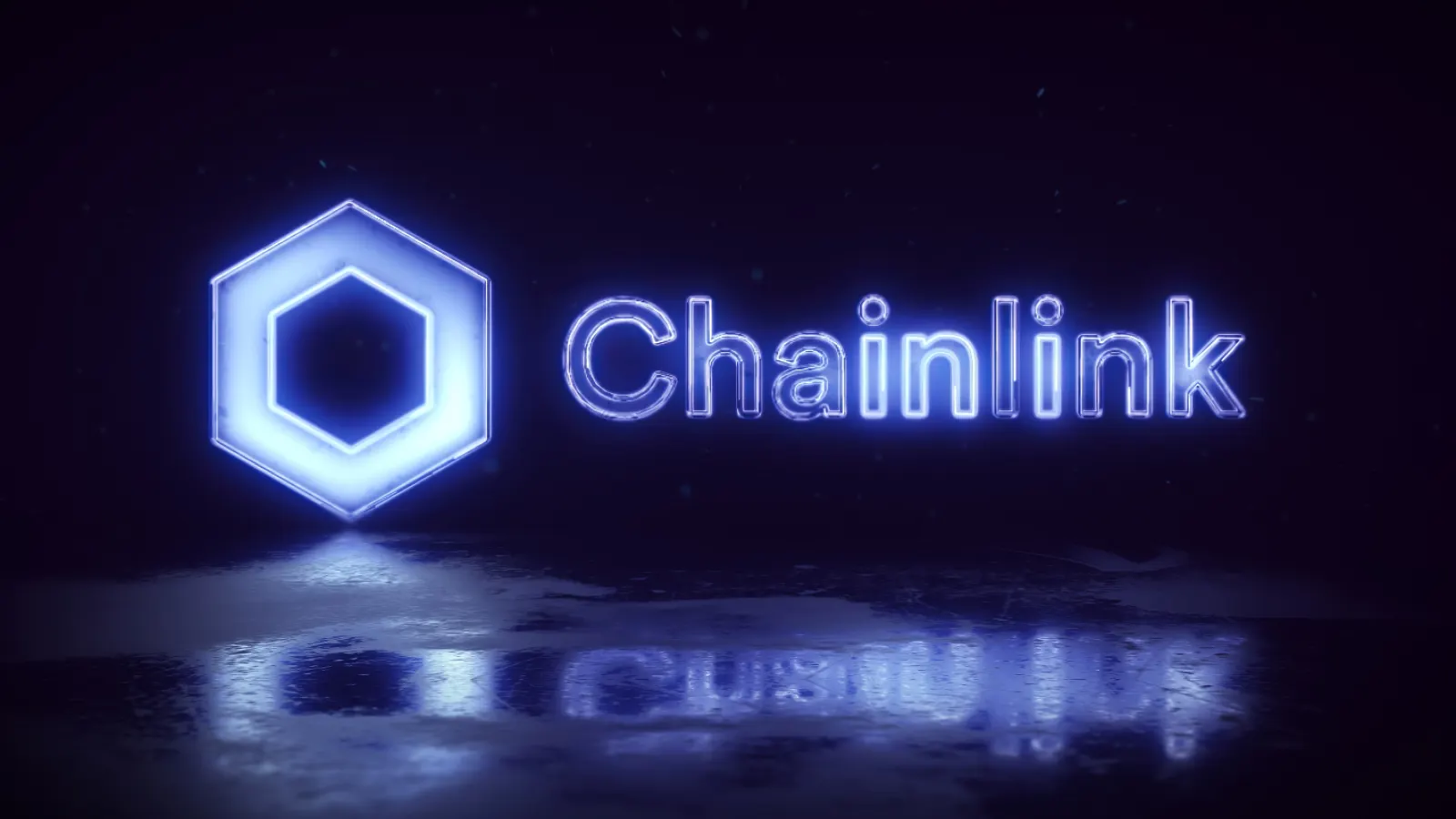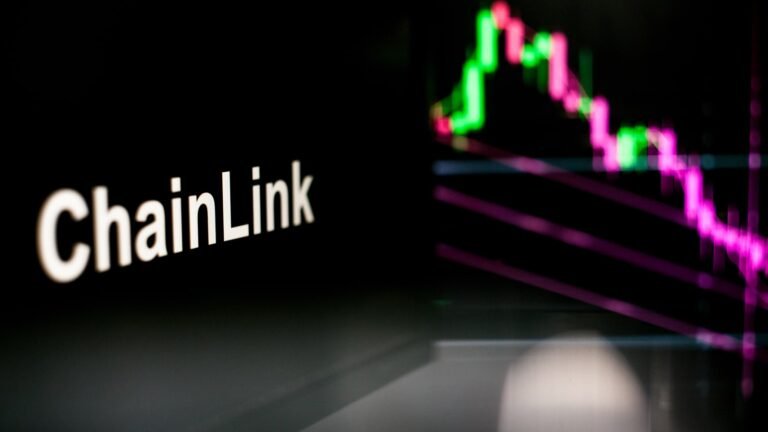The Chainlink cryptocurrency has evolved from a niche solution into a cornerstone of decentralized finance, bridging the gap between blockchain networks and the real-world data that modern smart contracts need. As decentralized applications expand from speculative trading to sophisticated lending, insurance, gaming, and tokenized real-world assets, Chainlink’s decentralized oracle network quietly powers the price feeds, randomness, and cross-chain messaging that make it all work. That indispensable role is why bold price forecasts for LINK continue to surface, and why market watchers increasingly frame Chainlink as critical infrastructure for the next phase of Web3.
This article explains what Chainlink is, why it dominates DeFi mindshare, and how tokenomics and adoption trends shape LINK’s outlook. You’ll learn the drivers behind bullish and bearish scenarios, the metrics that matter most, and practical ways to evaluate price predictions with a clear head. By the end, you’ll have a balanced, research-driven view of Chainlink’s competitive positioning and how those fundamentals intersect with market narratives about future valuation.
What Is Chainlink and Why It Matters
Chainlink is a decentralized oracle network designed to feed trustworthy, tamper-resistant data into smart contracts across multiple blockchains. Smart contracts excel at deterministic logic, but they are deliberately isolated from external systems for security. Oracles act as bridges, pulling in data such as asset prices, weather events, sports results, or proof-of-reserve attestations and delivering it on-chain in a verifiable way. Chainlink’s approach uses many independent node operators and cryptographic techniques to aggregate data securely, minimizing single points of failure.
The Oracle Problem in Simple Terms
Blockchains can’t directly query the internet. If a lending protocol needs the ETH/USD price to calculate collateral ratios, or a parametric insurance contract needs rainfall data to trigger a payout, a naïve solution would be to trust one server. That creates a single point of failure and a tempting target for manipulation. The “oracle problem” describes this exact vulnerability—when off-chain information is introduced on-chain, how do you prevent fraud, downtime, or bias? Chainlink addresses the problem with decentralized data sourcing, multiple oracle nodes, reputation systems, and cryptoeconomic incentives that align honest reporting with rewards and dishonest reporting with penalties.
How Chainlink Solves It
Chainlink aggregates data from premium providers and incentivizes a network of independent node operators to deliver and reconcile that data. Secure aggregation reduces outliers; layered monitoring and cryptographic proofs build transparency. The system supports many services beyond price feeds: verifiable randomness for gaming and NFTs, automation for scheduled smart contract upkeep, proof-of-reserves for stablecoins and tokenized assets, and cross-chain communications that let decentralized apps talk to one another across ecosystems.
LINK Token Utility
The LINK token fuels this decentralized oracle network. Node operators are paid in LINK for delivering data and services; staking mechanisms further align incentives by requiring operators to lock tokens as economic guarantees. As adoption grows, the demand for oracle services—and by extension LINK—can increase. While fee mechanics and buy-side demand evolve, the key takeaway is straightforward: more on-chain activity that depends on reliable data can translate into stronger token utility and healthier network economics.
Chainlink’s Role in DeFi Today

Chainlink is embedded across major DeFi protocols, where accurate, low-latency price feeds are mission-critical. Lending markets rely on precise collateral valuations to avoid cascading liquidations. Derivatives and perpetuals depend on up-to-the-second indexes for fair settlement. Automated market makers, asset managers, and stablecoin issuers benefit from secure data to guard against manipulation and maintain user trust.
Beyond Price Feeds: Cross-Chain and Automation
DeFi no longer lives on a single chain. Value moves across Ethereum, layer-2 networks, alternative L1s, and appchains. Chainlink’s cross-chain capabilities enable secure messaging and token transfers between networks, allowing developers to build applications that feel unified even while running on heterogeneous infrastructure. Automation services take care of routine maintenance—think harvesting yields, rebalancing portfolios, or executing limit orders—based on predefined conditions, all without manual intervention.
Real-World Assets and Enterprise-Grade Integrations
Tokenized treasuries, invoices, commodities, and real estate have surged in mindshare. These assets need reliable oracles for prices, interest rates, and proof-of-reserves. Chainlink’s enterprise partnerships and integrations with premium data providers help funnel authenticated, high-quality information into smart contracts. As institutional players explore tokenization, the need for auditability and verifiable data grows, making decentralized oracle networks more than a DeFi accessory—they become compliance-friendly infrastructure.
Market Drivers Behind LINK Price
Price action in crypto is a dance between fundamentals and speculation. For LINK, fundamentals revolve around network usage, fee growth, staking dynamics, and the breadth of integrations. Speculation leans on narratives about DeFi expansion, cross-chain dominance, and real-world asset tokenization.
Demand-Side Catalysts
Several adoption vectors can boost intrinsic demand for Chainlink services. As more protocols standardize on Chainlink price feeds and cross-chain messaging, fee volume can grow. If staking mechanisms continue to evolve and demand higher performance from operators, locked supply may increase as nodes seek rewards and reputation. Enterprise and RWA integrations can introduce recurring, non-cyclical usage. Each of these factors contributes to a stronger case for sustained demand for oracle outputs—and indirectly for LINK.
Supply Dynamics and Token Flows
On the supply side, the circulating supply, treasury management, and staking commitments matter. Greater staking participation can reduce liquid supply; conversely, token unlocks or treasury distributions can add sell pressure. While exact numbers change over time, the principle is stable: when new demand for oracle services outpaces liquid supply, price tends to respond positively. When supply overhang or macro risk-off conditions dominate, rallies can stall.
Macro Context
Crypto doesn’t exist in a vacuum. Interest rates, liquidity cycles, regulatory clarity, and risk appetite influence capital flows into digital assets. In easing cycles, growth narratives like DeFi and tokenization often find a louder audience. In tightening cycles, speculative activity wanes and only the strongest use cases keep compounding. Chainlink’s pitch—mission-critical infrastructure for smart contracts—has resilience across cycles, but sentiment still shapes short-term price behavior.
Bold Price Forecasts: Scenarios, Not Guarantees
Headlines love bold predictions. Some analysts frame LINK as a blue-chip infrastructure token that could re-rate significantly as DeFi matures; others argue competition and macro risk will cap upside. The smartest way to approach forecasts is through scenarios with assumptions you can track.
Base Case: Steady Expansion Over 12–24 Months
In a base case, DeFi continues to rebuild user numbers while tokenized assets expand methodically. Chainlink maintains its lead in decentralized oracle networks and captures a meaningful share of cross-chain messaging. Fees trend upward, staking participation remains healthy, and integrations deepen across major chains. Price-wise, this can look like a stair-step pattern—accumulation ranges, breakouts on adoption headlines, and retracements that find higher floors. The base case supports a constructive, if not euphoric, trajectory.
Bull Case: Accelerated Adoption and Rerating
In a bull scenario, DeFi user growth accelerates, tokenized treasuries and RWAs scale faster than expected, and cross-chain applications become a mainstream developer pattern. If Chainlink’s revenue lines grow and buy-side demand for LINK increases via staking and fee capture, markets could rerate LINK as indispensable infrastructure. Add a friendlier macro backdrop, and you have conditions for strong multiple expansion, with price discovery pushing beyond prior cycle highs as narratives and fundamentals reinforce each other.
Bear Case: Competitive Pressure and Risk-Off
The bear scenario centers on slower adoption, rival oracle solutions winning marquee integrations, or protocols building in-house data layers that reduce third-party reliance. Regulatory setbacks, security incidents, or macro shocks could also sap risk appetite. In this environment, LINK could range or trend down as investors prioritize liquidity and defensiveness. The key, even in a bear, is that infrastructure with real usage tends to outlast hype cycles; long-term viability isn’t synonymous with short-term price strength.
Risks and Challenges to Watch
No investment is risk-free, and infrastructure tokens face distinct threats.
Competition and Disintermediation
While Chainlink leads in brand recognition and integrations, alternative oracle designs and data middleware can compete on cost, performance, or specialization. Some large protocols may choose vertically integrated solutions to control their own risk surface. The competitive landscape, therefore, remains dynamic, and winning depends on reliability, developer experience, and ecosystem incentives.
Security and Economic Assumptions
Oracle manipulation can cause sudden losses. Chainlink’s defense-in-depth reduces this risk, but it never reaches zero. Economic guarantees must be sized correctly; node incentives must remain aligned; update frequencies and aggregation logic must reflect market volatility. Continuous upgrades and transparent incident response are crucial to maintaining trust.
Regulatory and Vendor Risks
Enterprise adoption invites regulatory scrutiny. Data provenance, privacy rules, and financial compliance standards influence integration timelines. On the vendor side, over-reliance on a handful of data providers or node operators can create concentration risks. Healthy decentralization and auditable processes are essential.
Also Read: Grayscale Adds AI & DeFi Tokens to Q1 2025 Watchlist
Investment Approaches for Exposure to LINK

Nothing here is financial advice, but it’s useful to understand common approaches.
Spot Accumulation and Time Horizons
Some investors accumulate LINK on spot markets, aligning buys with clear fundamentals such as new integrations or usage milestones. A long-term thesis focuses on Chainlink’s role as an oracle standard for DeFi and tokenized assets, accepting cyclical drawdowns as the price of innovation exposure.
Staking Considerations
Staking can align incentives and potentially share in network economics. However, staking introduces lockup, validator risk, and opportunity cost. Monitoring staking updates, slashing parameters, and reward sustainability helps you decide whether the trade-off fits your strategy.
Portfolio Sizing and Risk Controls
Prudent sizing acknowledges crypto volatility. Position limits, scenario planning, and pre-defined invalidation points help avoid emotional decision-making. Since LINK’s fate is tied to DeFi adoption, some investors pair it with assets that benefit from other narratives (e.g., infrastructure, data availability, or stable yield) to diversify thesis risk.
On-Chain and Off-Chain Metrics to Track
Watch on-chain activity in DeFi protocols that depend on Chainlink price feeds, cross-chain message counts, staking participation, node operator health, and fee growth. Off-chain, track enterprise partnerships, developer traction, and regulatory developments. These indicators collectively refine your view of whether bold price forecasts are grounded or speculative.
Technical Outlook Without the Hype
Technical analysis provides context for sentiment and positioning, even if it never guarantees outcomes.
Trend Structure and Key Levels
In healthy uptrends, price tends to establish higher highs and higher lows. Prior cycle peaks and post-breakout retests often become support. Volume expansions on breakouts suggest genuine interest, while fading rallies on weak volume warn of distribution. Traders commonly watch moving averages to identify trend shifts, but for long-term investors, the structure of ranges and the response to major levels matters more than short-term oscillators.
Liquidity, Volatility, and Event Risk
Liquidity pockets and volatility clusters form around news and integrations. A sudden spike in oracle usage or a major cross-chain launch can catalyze swift price discovery. Conversely, security incidents or macro shocks can trigger rapid drawdowns. Maintaining a rules-based approach can prevent impulsive reactions during volatility spikes.
How to Evaluate Chainlink Price Predictions
Not all forecasts are created equal. A sound prediction articulates assumptions you can test and update.
Check the Methodology
Credible analysis outlines adoption metrics, fee projections, token flows, and realistic timelines. It differentiates between network usage that produces durable fees and hype cycles that produce fleeting attention. It also acknowledges uncertainty and defines invalidation criteria.
Beware of Over-Optimization
Excessively precise targets often signal curve-fitting. Markets are complex adaptive systems. Prefer forecasts that present ranges, scenarios, and triggers that would change the outlook. A forecast that can’t be wrong isn’t analysis—it’s marketing.
The Road Ahead for Chainlink
Chainlink’s future arcs across three themes: deeper DeFi standardization, cross-chain interoperability, and tokenized real-world assets. If Chainlink continues to execute on secure, scalable oracle services while expanding cross-chain messaging and enterprise integrations, its position as a DeFi backbone should strengthen. At the same time, the network needs to maintain relentless focus on reliability, decentralization, and developer experience. In crypto, moats form around ecosystems that ship, secure, and support.
What to Watch Next
Over the next cycles, keep an eye on the breadth of protocols using Chainlink price feeds across L1s and L2s, the growth of cross-chain messaging volume, updates to staking mechanisms, and marquee enterprise or RWA partnerships. Proofs of reserves for tokenized assets, verifiable randomness for gaming, and automation for sophisticated strategies are natural showcases for oracles—each additional use case can compound the network effect.
Conclusion
Chainlink Cryptocurrency DeFi stands at the center of a crucial problem in decentralized computing: getting reliable real-world data on-chain and moving messages securely across blockchains. That problem isn’t going away; it’s getting bigger as DeFi scales and tokenization intersects with traditional finance. Chainlink’s decentralized oracle network, expanding service suite, and growing integrations give bulls plenty of material for bold price forecasts. Bears rightly point to competition, security assumptions, and macro cycles as counterweights.
The rational approach is scenario-based: track adoption, fees, staking dynamics, and cross-chain usage, and let those datapoints inform your conviction. In markets where narratives change fast, fundamentals that compound slowly tend to win. If Chainlink keeps solving the oracle problem at scale, the case for durable value accrual remains intact—even as price takes the meandering path it always does.
FAQs
What makes Chainlink different from other oracle solutions?
Chainlink emphasizes decentralization at multiple layers—data sources, oracle nodes, and aggregation—along with cryptoeconomic incentives and verifiable outputs. Its broad integrations across DeFi protocols and enterprise-grade data providers give it a network effect that many competitors are still building toward.
Is Chainlink a good investment for long-term holders?
That depends on your thesis and risk tolerance. If you believe DeFi, cross-chain interoperability, and tokenized real-world assets will keep expanding, Chainlink’s role as a critical data infrastructure can be attractive. Still, crypto is volatile. Position sizing, diversification, and a long horizon are essential.
How does staking affect LINK’s price?
Staking can reduce liquid supply and align operator incentives, potentially supporting price during adoption cycles. But staking also introduces lockups and protocol-specific risks. Whether it’s price-positive depends on actual network usage, fee growth, and how staking parameters evolve.
What are the biggest risks to Chainlink’s growth?
Competition from alternative oracle networks or in-house solutions, security incidents that undermine trust, and adverse regulatory developments could all slow adoption. Concentration among data providers or node operators is another risk area the network must continually manage.
How can I assess bold price forecasts for LINK?
Focus on measurable drivers: the number of protocols using Chainlink, growth in fees and cross-chain messages, staking participation, and the pace of enterprise/RWA integrations. Prefer scenario ranges over single targets, and look for clear assumptions and invalidation points rather than blanket hype.


